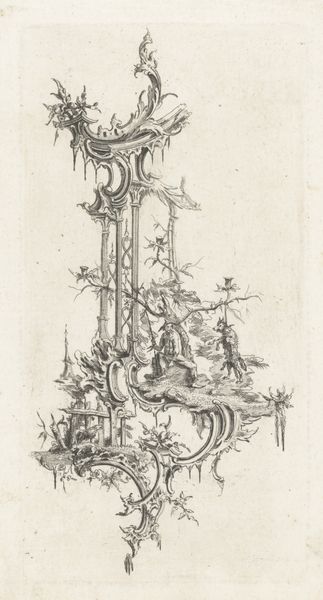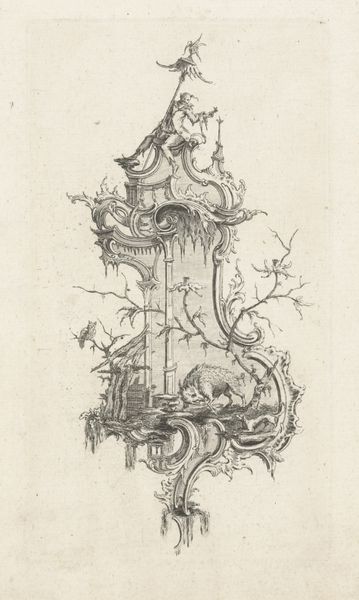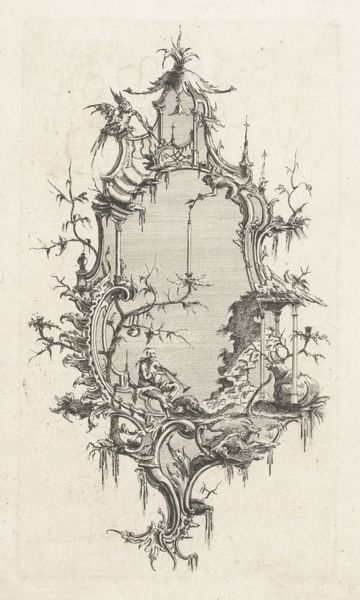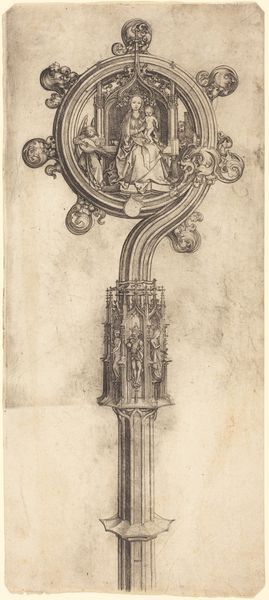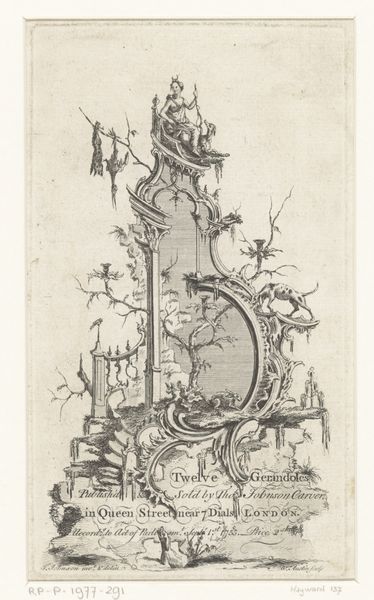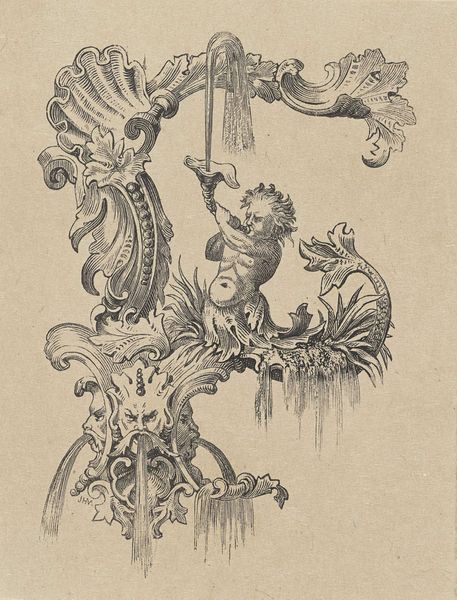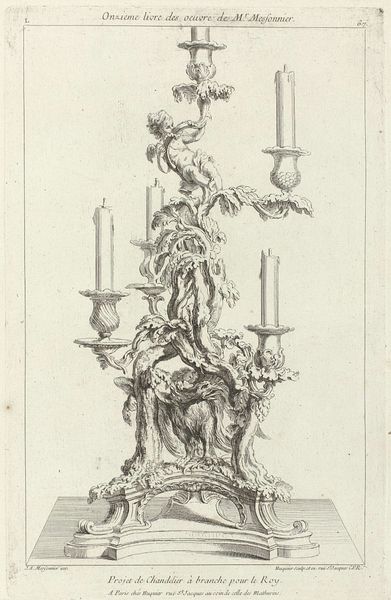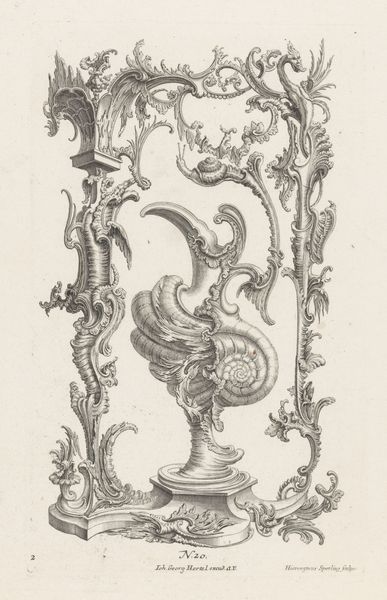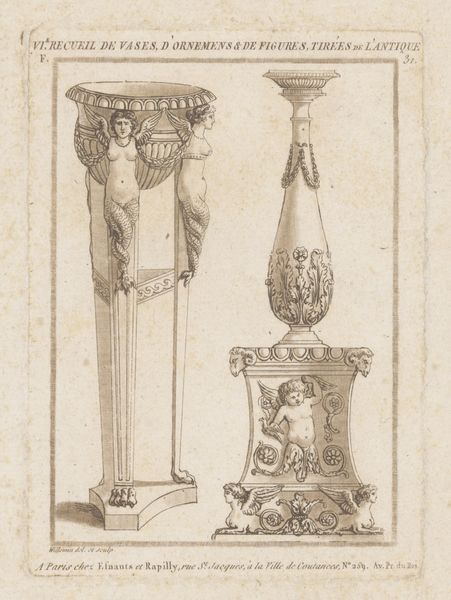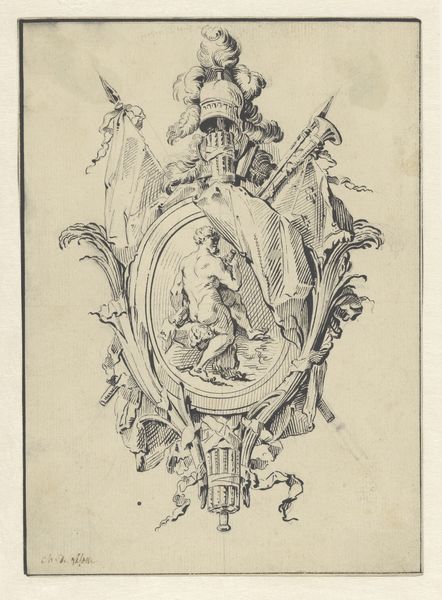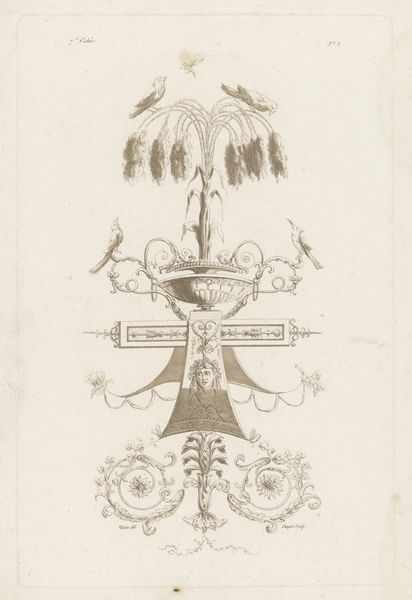
drawing, etching, engraving
#
drawing
#
baroque
#
pen sketch
#
etching
#
figuration
#
form
#
pen-ink sketch
#
line
#
pen work
#
sketchbook drawing
#
engraving
Dimensions: height 190 mm, width 97 mm
Copyright: Rijks Museum: Open Domain
This elaborate design for a girandole – a branched candle holder – was made by William Austin in 18th-century England. It displays the fashion for chinoiserie, a whimsical European interpretation of Chinese and East Asian motifs that became popular among the elite. The design incorporates pagodas, figures in vaguely Asian garb, and a hippocampus, blending them into an asymmetrical, decorative whole. This vogue for chinoiserie reflects a broader phenomenon: the European appropriation and reimagining of foreign cultures, spurred by increasing trade with the East. It speaks to a society that consumed images of foreign lands, filtered and reshaped to suit European tastes and fantasies. To fully understand this image, we might explore the history of trade routes, the rise of consumer culture, and the social status attached to owning such decorative objects. By studying the material culture of the time, and the visual language it employed, we gain insight into the complex relationship between Europe and the wider world.
Comments
No comments
Be the first to comment and join the conversation on the ultimate creative platform.
